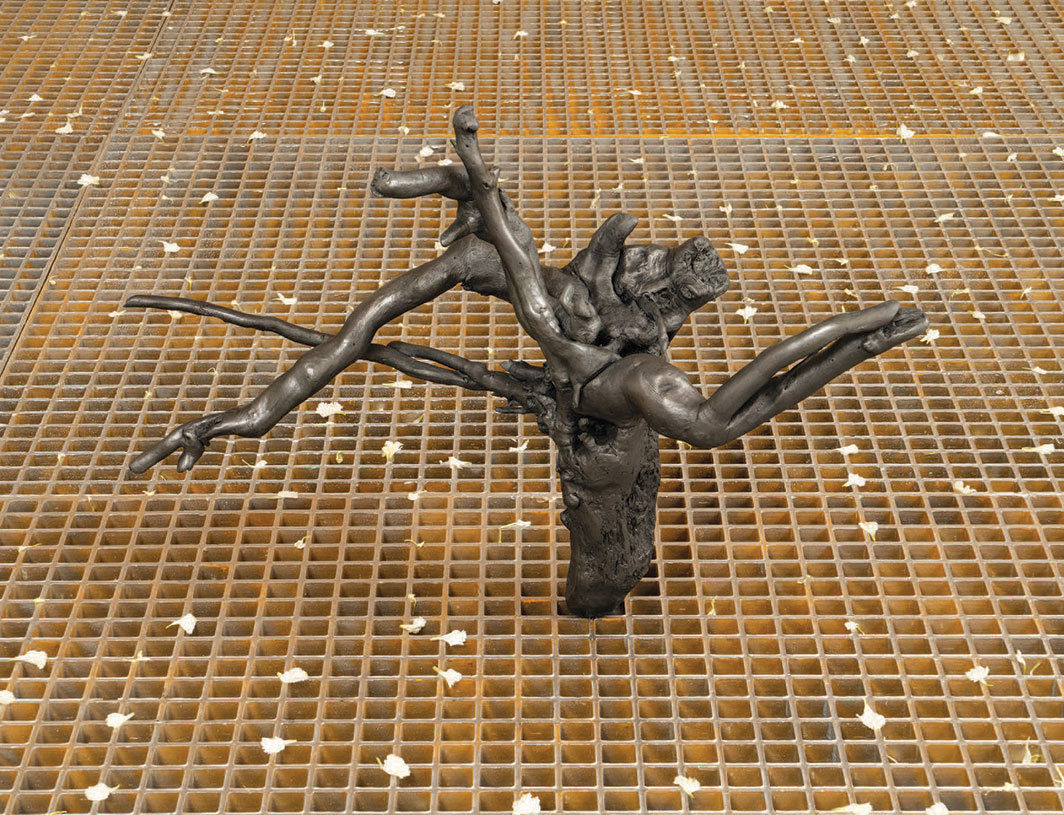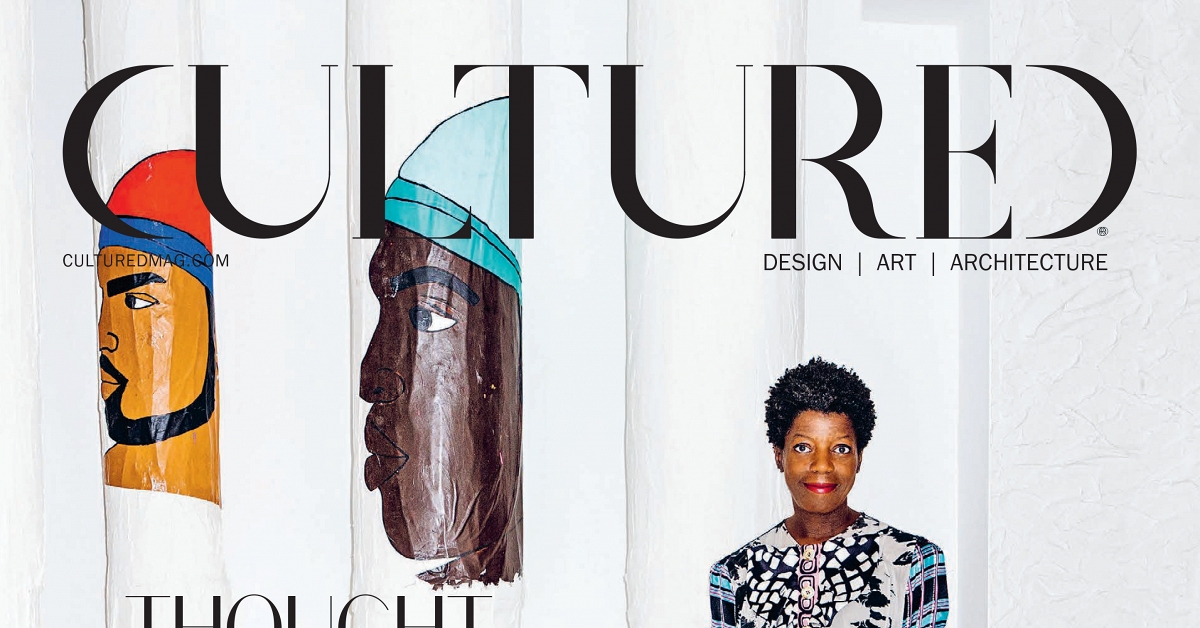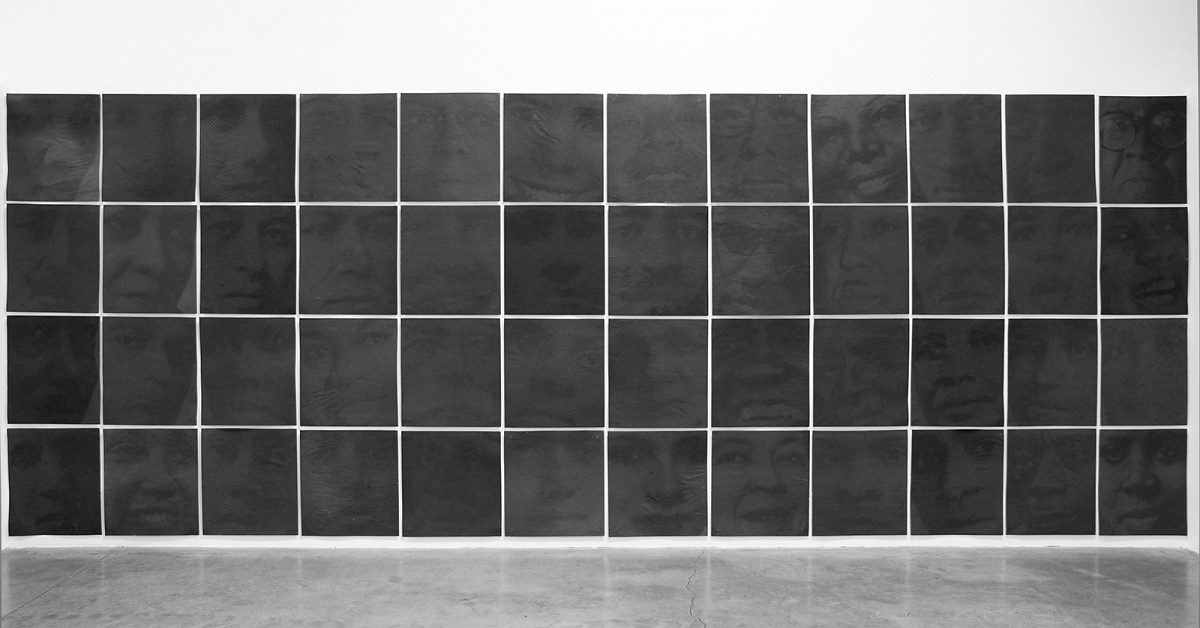Harold Mendez: Logan Center Exhibitions, University of Chicago
Artforum / May 1, 2020 / by Michelle Grabner / Go to Original

Harold Mendez, The years now (detail), 2020, mixed media, dimensions variable.
“The years now” was the title of both the exhibition and the newly commissioned sculpture that occupied the center of the main gallery, beyond the aforementioned assemblage. The primary features of the newer piece were eight fiberglass grates, each coated with silver enamel and placed in a grid on the floor to suggest a single large industrial plane, recalling Carl Andre’s floor-hugging expanses of metal plates. Yet instead of allowing visitors to traverse the work’s surface, as Andre did, Mendez chose to cover his grille relief with Lilliputian white carnation petals as a funereal proxy for a living body. Another vanitas-like element occupied the matrix, too: a gnarly tree stump, oriented upside down so that the chunky roots reached into the air like short, dead branches. Given a burnished black surface treatment, this organic element echoed the woody growth on the fence post in the adjacent gallery.
The other two elements of the work were a sound component that filled the gallery space and a small 3D-printed replica (with modifications) of a Chimu funerary pot from Peru’s Moche Valley. The pot called one’s attention to the role of the human in Mendez’s work: Conjured via trace or surrogate, the physical body is never pictured but is always present. The sonic landscape, which primarily featured a male voice, followed this logic. The exhibition essay, penned by Katja Rivera (who curated the show with Alyssa Brubaker), lucidly describes the piece: “Beginning in a steadfast cadence, a measure of self-doubt creeps into the narrator’s speech. ‘Who am I?’ he asks, answering himself moments later, ‘The louder I ask, the louder becomes the silence of no answer, until it seems the silence is saying, by saying nothing, you ain’t nothing.’” Yet in the space itself, the multichannel installation at times played at a volume too faint to allow comprehension, transforming the narrative of self-doubt into a gentle murmur of abstract speech, something like a prayer. The physical elements that made up this “memorial field” (as Rivera described it) summoned cultural memories from across time and space; combined with the installation’s lack of represented bodies, these objects more pointedly alluded to eradication and discrimination campaigns against the indigenous peoples of the Americas.
The original pre-Columbian Chimu vessel, which is held by the Field Museum in Chicago, is in the form of a symmetrically stylized fruit with a handle and a spout, ornamented with a row of seeds and the small playful figure of a monkey, which clasps the base of its opening. Mendez’s digitally printed facsimile simulates the patina of the ancient ceramic piece but is altered and scaled up, in part for display and in part to host one of the speakers projecting the audio component of the work. While the artist’s act of reproducing a historical artifact falls in line with other critical practices that dispute originality and authorship, Mendez’s implementation of the dichotomy between real and replica—along with those between life and death, growth and decay, horizontal and vertical—felt unresolved and precarious. More impactful and poetic were the smaller gestures, such as the repeated scattering of fresh petals on the heavy grate.






